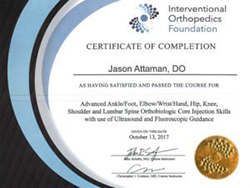Tendonitis Therapy Near Seattle: Options for Treating Tendonitis
A tendon is strong but stretchy connective tissue that attaches muscle to bone. Tendons allow muscles to stretch and contract, while providing stability to joints. Without tendons, joints like shoulders, elbows, hips, knees, ankles couldn’t function. When your tendons hurt, joints and certain muscle groups don’t function properly or without pain.
What is tendonitis?
Tendonitis (AKA tendinitis) refers to inflammation of the tendon, most commonly due to overuse. Tennis elbow (lateral epicondylitis) is a classic example of tendonitis involving extensor muscle tendons of the elbow. Other examples include golfer’s elbow, jumper’s knee, or Achilles tendonitis. Over time, tendons can become calcified and can limit your function and range of motion.
Treatment options for tedonitis
If rest, medications, bracing, and physical or occupational therapy don’t do the trick, you may require another form of treatment, like:
Corticosteroid injection
Pros: Reduce inflammation/pain, quick recovery time. Covered by insurance
Cons: Can weaken tissue, increasing risk for tears or rupture.
Percutaneous tenotomy
Pros: Remove unhealthy tissue while leaving healthy tissue intact. An outpatient procedure.
Cons: Recovery time 6-8 weeks. May not be available in all clinical settings.
Percutaneous tenotomy is an ultrasound-guided, minimally invasive procedure that delivers ultrasonic energy, debriding and removing unhealthy tissue, while leaving the healthy tissue intact.
This video and this one can help explain.
Take-home message
Percutaneous tenotomy can be a very effective treatment option to treat inflamed, irritated, or calcified tendons. If more conservative measures aren’t as effective as you’d hoped, it is a great option to get back to the activity that you love, without needing surgery.
